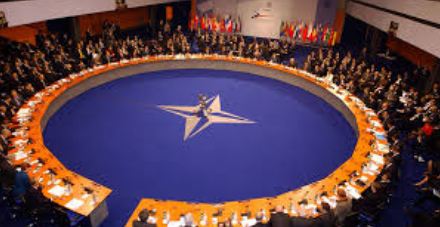NATO (North Atlantic Treaty Organization) was created in 1949 to provide collective defense for its member states, primarily in Europe and North America. The core principle of the alliance is that an attack against one member is considered an attack against all, as outlined in Article 5 of the NATO treaty. This principle has been invoked only once, in response to the September 11 terrorist attacks in 2001.
Following the Cold War, NATO shifted its focus from solely deterring Soviet threats to addressing a wider scope of security challenges. The alliance expanded its roles into crisis management, peacekeeping, and combatting terrorism. NATO conducted missions in the Balkans, Afghanistan, and maritime security operations. Furthermore, the alliance grew eastward, incorporating many former Warsaw Pact countries and Soviet republics, thereby redefining its strategic objectives.
Today, NATO faces multifaceted challenges that raise questions about its traditional role and future viability. The most acute challenge is the resurgence of Russia as a geopolitical adversary, especially after its invasion of Ukraine in 2022. This conflict revitalized NATO’s original mission of collective defense and caused members to strengthen their military presence, especially in Eastern Europe.
Simultaneously, internal disputes within NATO have emerged, including disagreements over defense spending and diverging views on global powers such as China and Russia. Some member states have questioned NATO’s ongoing relevance and the financial costs of membership, particularly as security threats evolve beyond traditional military conflicts into realms such as cyber warfare, terrorism, and hybrid warfare.
The rise of China as a global power also affects NATO’s strategic considerations. Although China does not pose a direct military threat to NATO members comparable to Russia, its expanding influence in technology, economics, and geopolitics challenges the alliance to reexamine and update its strategic priorities accordingly.
Despite these challenges, several strong arguments affirm NATO’s continued necessity:Collective Defense and Deterrence: NATO remains the world’s most effective military alliance for credible deterrence against aggression, particularly from Russia. Its integrated command structure and coordinated capabilities outperform any other security arrangement globally.
Political Unity: Beyond its military functions, NATO fosters vital political dialogue and cooperation among Western democracies. This coordination helps address a broad spectrum of security issues, including counterterrorism and cyber defense.
Adaptability: NATO has demonstrated resilience and adaptability over decades. It is expanding its focus to include new domains like cyber and space and is exploring partnerships beyond the traditional Euro-Atlantic sphere.
Support for Global Stability: Through joint exercises and partnerships, NATO plays a crucial role in stabilizing conflict regions and enhancing interoperability among diverse militaries worldwide.
NATO’s future will largely depend on its ability to reform and stay relevant amid an increasingly complex global environment. Key priorities include:Resolving internal divisions and achieving equitable burden-sharing among members.Enhancing capabilities to counter hybrid and cyber threats.Engaging emerging powers and expanding strategic partnerships worldwide.Maintaining focus on collective defense while developing strategies to tackle non-traditional security challenges.
The world has transformed dramatically since NATO’s founding. Yet, its core mission of collective defense, paired with evolving capabilities, continues to make NATO an indispensable component of global security architecture. While reforms and modernization are necessary, abandoning NATO now would risk creating a security vacuum that could empower adversarial powers. Therefore, despite ongoing debates, NATO remains essential—albeit in a transformed, modernized form designed to meet the strategic challenges of the 21st century.

















